Immigration, Lions, Poverty Pay & Palestine: Ten years ago on Friday 13th March 2015 I photographed four very different protests in London, beginning outside an immigration tribunal in Feltham, going from there to Trafalgar Square where people where protesting against ‘canned hunting’ of lions, on to Kensington Gore where cleaners were demanding a living wage at the Royal College of Art and finally to the offices of G4S on Victoria St, Westminster for a protest against the imprisonment and torture of four young Palestinian boys by Israel.
Let Ife Stay in the UK! – York House Immigration Tribunal, Feltham
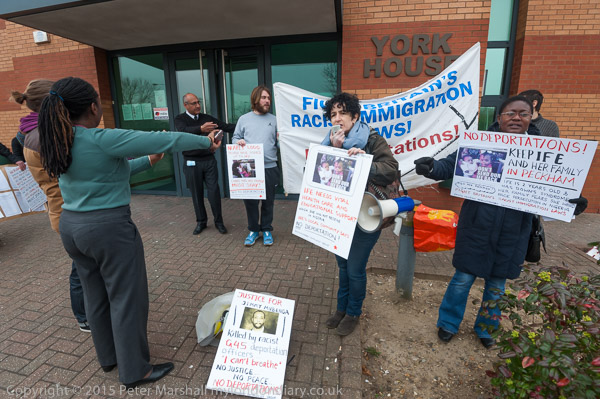
York House where the Immigration Tribunal is based is on an industrial estate halfway between Feltham and Heathrow on the western fringes of London and protesters had not found it easy to get there. I arrived a little late and other protesters only arrived shortly before I left, with others still on their way.
The protest had been held up at the start when security at the tribunal had told the protesters they were not allowed to protest outside the offices, and had called the police. But the police had come and confirmed that not only they had the right to protest there but also that people could take photographs outside the tribunal – though of course cameras and recording equipment were not allowed inside the tribunal.

The protesters had come to demand that 2-year-old Ife, who had Down’s syndrome, and her mother should be allowed to stay at their Peckham home where she can receive essential healthcare and support and not be deported to Nigeria. They intended to stay until after the end of the tribunal hearing later in the day.
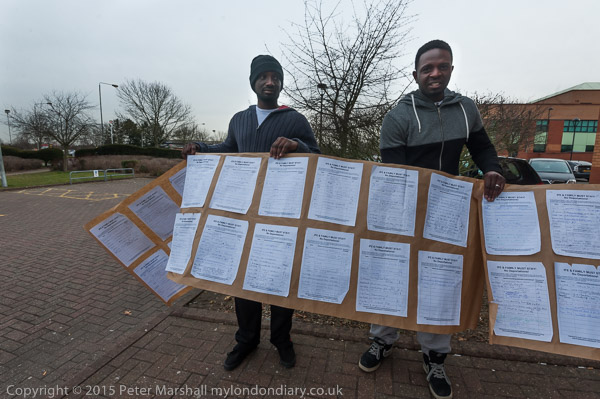
The protesters from the Revolutionary Communist Group had brought with them posters covered with the sheets of a local petition to keep Ife here with nearly a thousand signatures, as well was posters denouncing the UK’s racist immigration laws and also calling for justice for Jimmy Mubenga, killed by racist G4S deportation officers during his forced deportation flight from Britain.
Save Our Lions – ban Canned Hunting – Trafalgar Square
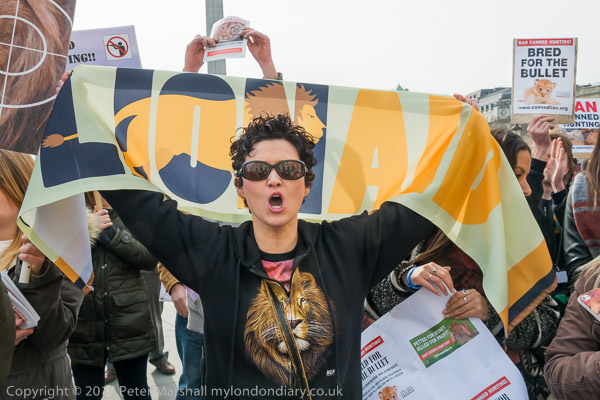
Several hundred gathered in Trafalgar Square to protest against ‘canned hunting’, where lions are bred and raised tame on farms in South Africa for rich visitors to pet, to ‘walk with lions’ and to shoot as trophy heads.
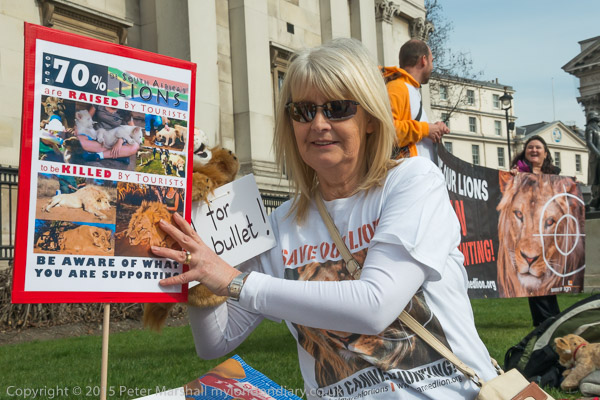
The protesters say this degrades a noble animals and threatens wild lions, which are captured for farm breeding to improve the quality of the stock.
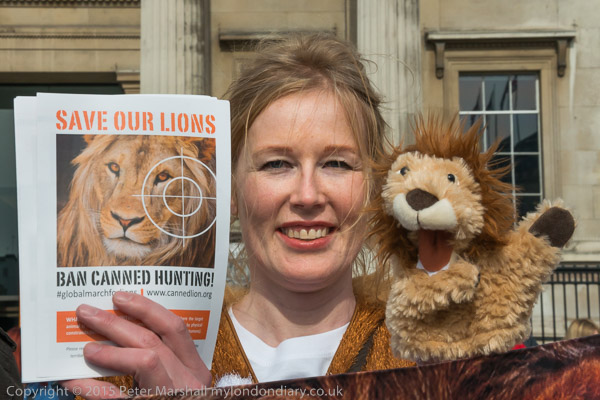
Only very young cubs are safe to pet and young female lions are often killed once they become too large to pet as there is much less demand for female lions as hunting trophies.
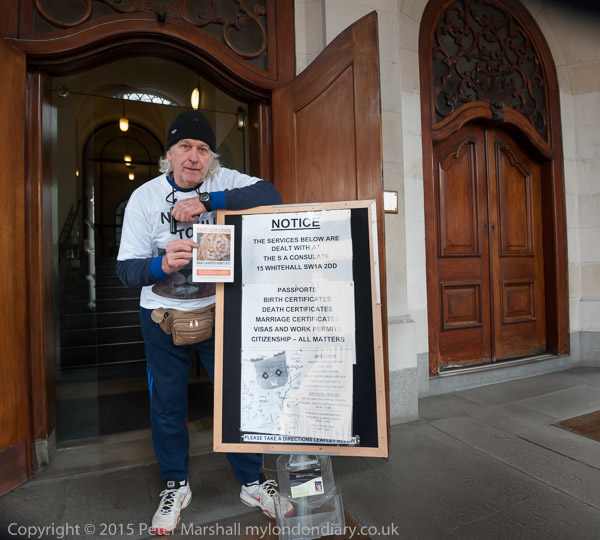
After speeches and photographs on the North Terrace I was invited to go with one of the protesters to South Africa House where he stood in the entrance with a placard and poster until security told us to leave.
Save Our Lions – ban Canned Hunting
Poverty pay at the Royal College of Art – Kensington Gore

I met with protesters from the IWGB (Independent Workers’ Union of Great Britain) at the Royal College of Art where they had come at lunchtime to demand that cleaners be immediately paid the London Living Wage. Previous pressure from the IWGB had led to the RCA saying it would pay the living wage from September 2015, but the cleaners needed it now, not in sixth months time.
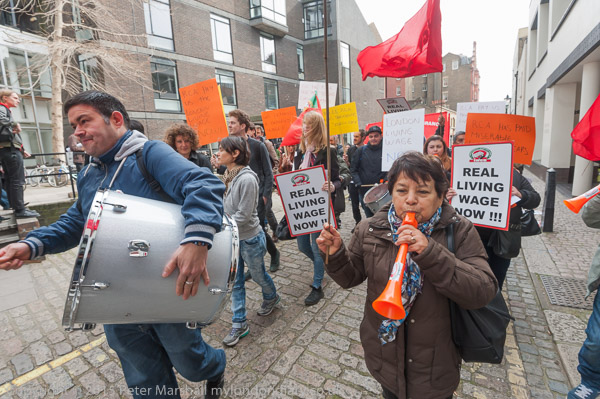
After a noisy protest outside the college entrance in a mews just off the main road where they were joined by around 50 students in support the marched onto Kensington Gore for a more public protest on the east side of the college facing the Royal Albert Hall.
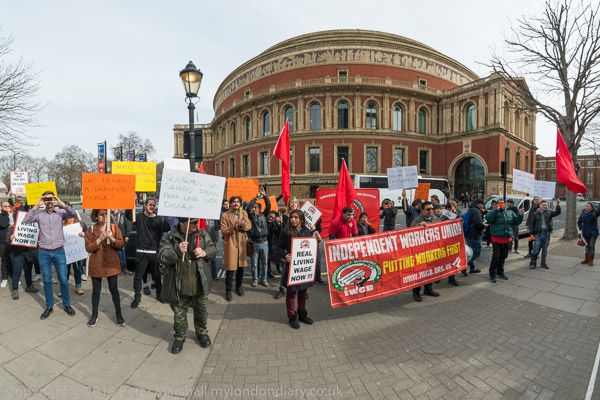
Here there were speeches and chanting and a great deal of noise from the drums and vuvuzelas before the protesters went back to continue their protest at the college entrance.

From here they moved further down the mews and to an almost enclosed yard at the rear of the college next to a dining area keeping up a barrage of noise. After keeping up their loud protest for around an hour they finished with a warning to RCA management that they would be back and keep up the protests until their demands were met.
Poverty pay at the Royal College of Art
Free the Hares boys protest at G4S – Victoria St
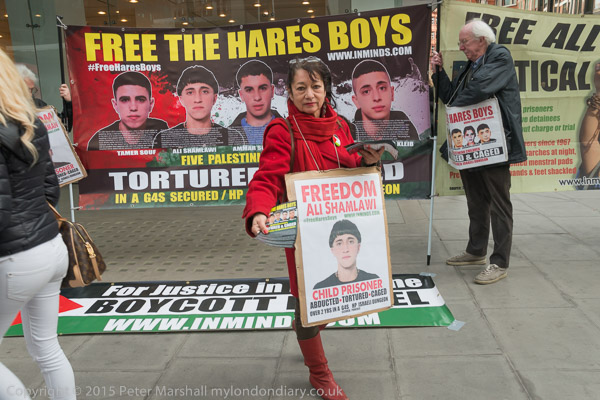
British multinational private security company G4S plays a key role in running jails in Israel where thousands of Palestinians are held.
Among the prisoners being held and tortured were 5 young boys from Hares in the northern West Bank of Palestine, and the Islamic Inminds Human Rights Group were protesting outside the G4S offices on Victoria St demanding their immediate release.
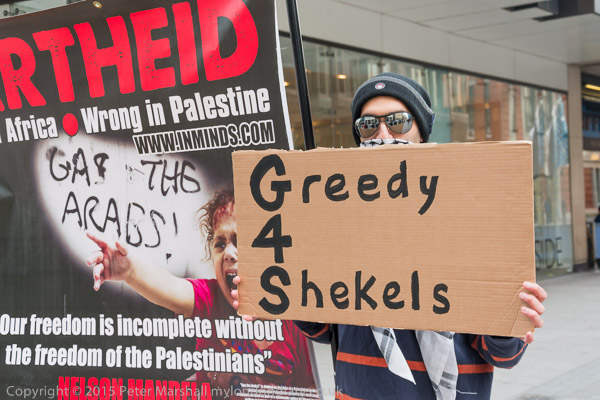
The boys were arrested after an Israeli illegal settler crashed into the back of an Israeli truck and they were alleged to have caused the collision by throwing stones.
That had happened two years earlier and the boys had now been held without trial for two years for the alleged crime – for which there appeared to be no evidence.

One of the five, Mohammed Mahdi Saleh Suleiman, was convicted by a military court and sentenced to 15 years in prison on the basis of a statement obtained by torture that he was not allowed to read before being forced to sign.
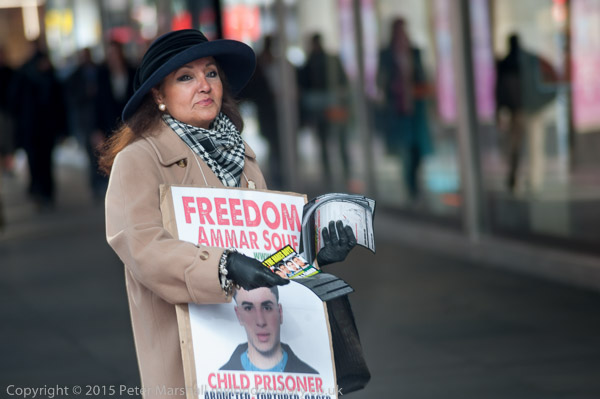
In 2016 the United Nations Working Group on Arbitrary Detention published its opinion on his case. They called his detention ‘discriminatory’ and ‘arbitrary’ and called for his immediate release by Israel. Israel ignores most if not all UN opinions.
Free the Hares boys protest at G4S
Flickr – Facebook – My London Diary – Hull Photos – Lea Valley – Paris
London’s Industrial Heritage – London Photos
All photographs on this page are copyright © Peter Marshall.
Contact me to buy prints or licence to reproduce.






